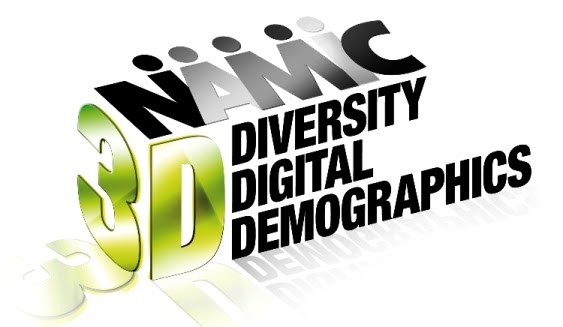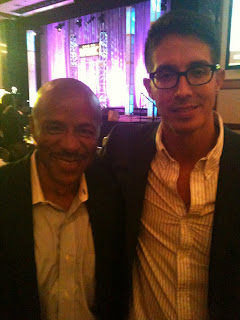Fact: More content is uploaded on Youtube in 2 months than TV has created in 60 years.
That fact indicates that people want to be e
ntertained instantaneously no matter where the content comes from whether it’s in a traditional format, or other. Then the challenge becomes creating not only original content for network and cable TV, but programming that actually reflects and resonates with a diverse audience. Networks and consumer companies have been experimenting with how to deliver original content and products in a way that meets the needs of multi-ethnic audiences and consumers.
Smokey Fontaine, Chief Content Officer at Interactive One moderated a panel discussion regarding the topic. He said, “Original content seems like a contradiction in terms. The idea that you could aggregate content seems quite odd. You better have a strong business model of how to monetize that content.” Actress and producer Tatiana Ali of Fresh Prince of Bel-Air fame, gave her explanation of how she addressed this issue.

“We’re an independent production company, (Hazrah Entertainment) so for us the excitement is to bring original narratives that might have a hard time finding a place in traditional media,” Ali explains. She partnered with Procter and Gamble and got funding to bring Buppies, an online show to the public. The show was picked up and debuted by BET and attracted over 5 million viewers. Ali’s company will be producing her sitcom, Love That Girl on TV One next year, in conjunction with Martin Lawrence. Ali originally chose a digital format to distribute her content, which was the easiest choice at the time. Other more established brands, like MTV face less distribution obstacles.

Nusrat Durrani, SVP and GM of MTV World talked about the importance of digital distribution. “One of key advantages MTV has is one of most distributed brands out there. If advertisers or content creators come to us they already know they have the reach. Content for us is also very important. If you have a good piece of content you will find distribution,” Durrani explains.
Kisha Mitchell Williams, Multicultural Brand Manager at Procter and Gamble is part of a team that utilized an approach more and more companies are using to create a full circle solution to getting their product to consumers. “We used to be all about product placement, making relevant connections to the brand. Now it’s about creating content that (reaches the viewers),” explains Williams, referencing the “My Black is Beautiful” campaign. I learned that particular campaign began because it was discovered that nearly 80% of African American women are extremely disenchanted with the way their portrayed in media. (I co-sign on that!)
It seems companies are really recognizing that various ethnic groups are lacking representation in media and are creating separate entities to address the void. But I seemed to stump the panel when I asked if there was resistance to integrating ethnic themes into main stream programming as opposed to or in conjunction with creating totally separate entities. There was a pretty long pause, but then Mitchell jumped in and stated that some products need niche marketing, but other products can cross over. “It has to make sense,” she explained, noting that Coca Cola, for example is a brand that can be targeted to a niche audience or mainstream.
The importance of an online presence was reiterated. Philip Wang, Co-Founder of Wong Fu Productions, a company that provides Asian programming on the web, has found his entire fan base online. “When people are given a choice people will find a show (they like). They want entertainment at their fingertips. We’ve carved out a very specific audience. What we’re hopeful for is that the web is really the future.” He goes on to state that, “One of the struggles is to stand out among the plethora of terrible videos, but there are good content creators out there.” Ali also agreed that maintaining the loyalty of viewers, particularly the community that was formed online is key, and cautioned, “Don’t leave the web audience behind and make them feel like they’re a stepping stone.”
Regarding diversity in general, not all ethnic groups are represented on their own channel as of yet, and have to become creative with getting their own authentic stories to the public. “Online is pretty much the only place we can be, it’s sad, (that we don’t have our own BET, or Univision) but empowering (to have a) devoted online fan base,” Wang explains.
And in terms of creating content that not only reflects diversity but reaches a mainstream audience, Ali says that a good story will attract a cross section of viewers, demonstrated in shows such as The Fresh Prince of Bel-Air or The George Lopez Show. And I think that’s the main ingredient; a good story, i.e. a quality product will attract viewers and consumers whether you are trying for a mainstream audience or targeting a specific market.
Personally I’m happy to see people striking out and finding new ways to bring a diverse content to the masses. I for one will support entrepreneurial efforts as well as projects from established brands as long as the quality is there. I think we’ve entered a fantastic time in media where anything goes. We’re no longer hindered by traditional formats and funding. I hope this new era of media opens the door for more creative people to get their own brand of genius to the public!
 The central theme centers around producing content for a diverse consumer audience. What does that look like? What images accurately reflect the authenticity of a particular community or ethnic group? How does programming convey cultural sensitivities like language, lifestyle and values? The panel of executives included Loretha Jones, President of Original Programming for BET Networks; Geraldine Moriba, Executive Producer, “In America” production unit, CNN Worldwide; and Ligiah Villalobos, Producer/Writer of the children’s series, "Go Diego Go." Quoting Oprah Winfrey, Villalobos summed it all up by saying: "The best defense against racism is excellence." That, my friends, says it all.
The central theme centers around producing content for a diverse consumer audience. What does that look like? What images accurately reflect the authenticity of a particular community or ethnic group? How does programming convey cultural sensitivities like language, lifestyle and values? The panel of executives included Loretha Jones, President of Original Programming for BET Networks; Geraldine Moriba, Executive Producer, “In America” production unit, CNN Worldwide; and Ligiah Villalobos, Producer/Writer of the children’s series, "Go Diego Go." Quoting Oprah Winfrey, Villalobos summed it all up by saying: "The best defense against racism is excellence." That, my friends, says it all.

 Signing off in 2010….you've been around town with Fred Brown!
Signing off in 2010….you've been around town with Fred Brown!




































